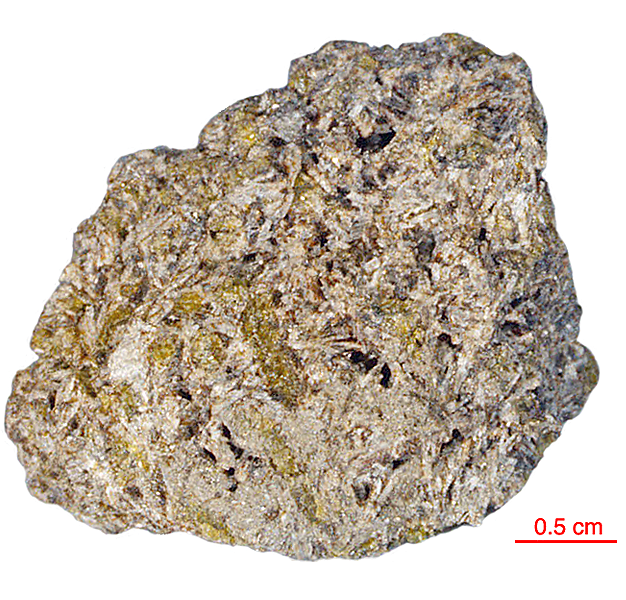
Fact sheet
15117 is a coarse-grained pigeonite basalt similar to 15115 and 15116 which was collected as a small fragment in a rake sample. Pyroxene forms chemically-zoned, bladed crystals intergrown with laths of plagioclase feldspar. Many plagioclase crystals have hollow cores. Pyroxene and plagioclase compose nearly 90% of the rock. The sample contains no olivine. Accessory minerals include ilmenite, metallic iron and troilite.
The sample weighed 23.3 grams before analysis and has been dated at 3.35±0.04 billion years (Rb/Sr).
Further details of this and other Apollo samples are here: http://curator.jsc.nasa.gov/lunar/
The Apollo 15 landing site was in the Apennine Highlands, and close to Hadley Rille — a long, narrow winding valley. Approximately 76 kg of lunar material, including soil, rock, core-tube and deep-core samples, were returned to Earth.
This mission was the first flight of the Lunar Roving Vehicle which allowed the astronauts to venture further from the Lunar Module than in previous missions. During three periods of extravehicular activity, or EVA, on July 31st, and August 1st and 2nd, Scott and Irwin completed a record 18 hours, 37 minutes of exploration, travelling 17.5 miles, in the first car that humans had ever driven on the Moon.
Apollo 15 was launched on 26 July 1971.






